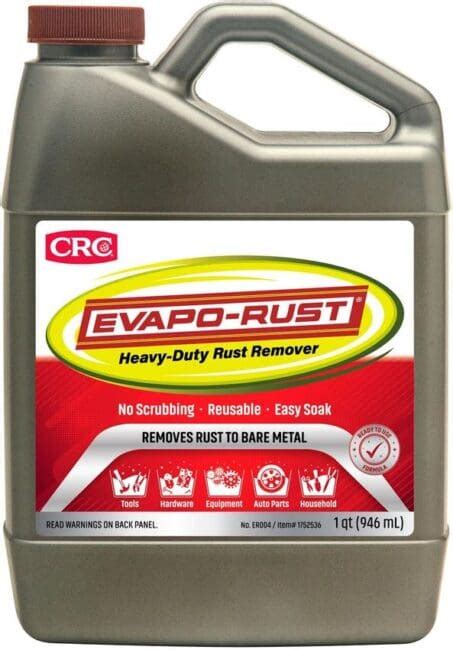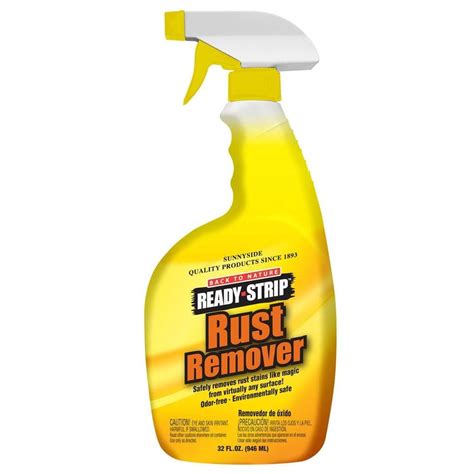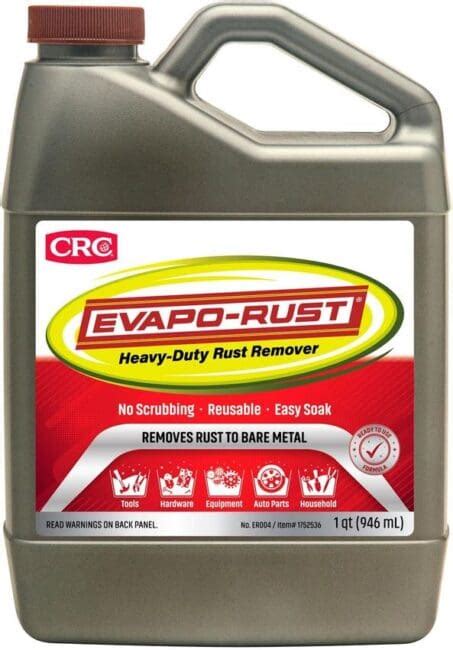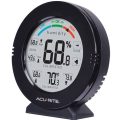Environmentally Safe Rust Remover: Your Comprehensive Guide
Rust, a common problem on metal surfaces, can be a pain to remove. Traditional rust removers often contain harsh chemicals that can be harmful to the environment and your health. Thankfully, there are now environmentally safe rust removers available that are just as effective without the environmental impact.
This guide will answer your most pressing questions about environmentally safe rust removers, including how they work, the best options available, and how to use them safely and effectively.
What Are Environmentally Safe Rust Removers?
Environmentally safe rust removers are designed to remove rust from metal surfaces without using harsh chemicals that can harm the environment or your health. They typically use natural ingredients and biodegradable formulas that break down quickly and leave no harmful residues.
These rust removers often contain ingredients such as:
- Citric acid: A naturally occurring acid found in citrus fruits, citric acid effectively removes rust without harming the metal.
- Phosphoric acid: Another naturally occurring acid, phosphoric acid is commonly used in rust converters and can effectively convert rust into a stable protective layer.
- Oxalic acid: This acid is often used in rust removers and can be found naturally in plants like rhubarb and spinach.
- Biodegradable surfactants: These agents help to loosen and remove rust particles, while also being safe for the environment.
These ingredients work together to remove rust without compromising your health or the environment. They are a great alternative to traditional rust removers that can contain harmful chemicals like hydrochloric acid and sulfuric acid.

What Makes Environmentally Safe Rust Removers Better?
Environmentally safe rust removers offer several advantages over their traditional counterparts:
- Safer for the environment: They are biodegradable and break down quickly, minimizing their impact on waterways and soil.
- Safer for you: They are free from harsh chemicals that can irritate your skin and respiratory system.
- Less odor: They often have a milder odor than traditional rust removers, making them more pleasant to use.
- Effective rust removal: Despite their natural ingredients, they are still effective in removing rust.
These advantages make environmentally safe rust removers a better choice for both your health and the environment.
How Do I Choose the Right Environmentally Safe Rust Remover?
Selecting the right environmentally safe rust remover depends on your specific needs and the surface you’re treating. Here are some factors to consider:
- Type of metal: Different metals may require different types of rust removers. For example, steel might need a different formula than aluminum.
- Severity of rust: If the rust is light, a mild formula might suffice. For heavier rust, a stronger formula may be necessary.
- Application method: Some rust removers are available in sprays, gels, or liquids, each with its own advantages and disadvantages.
- Ingredients: Consider the specific ingredients and their potential impact on the environment.
It’s always a good idea to read the product label carefully and choose a rust remover that is specifically designed for your needs.
How Do I Use Environmentally Safe Rust Removers Safely and Effectively?
Using environmentally safe rust removers is generally safe and easy. However, it’s important to follow these safety guidelines:
- Wear protective gear: Wear gloves and eye protection to avoid contact with the product.
- Work in a well-ventilated area: Avoid working in enclosed spaces without proper ventilation.
- Follow product instructions: Each product has specific instructions for application and usage.
- Don’t mix with other products: Mixing different rust removers or cleaning products can create dangerous reactions.
- Dispose of product properly: Check the label for disposal instructions and follow them carefully.
By following these simple tips, you can ensure that you are using your rust remover safely and effectively, minimizing the risk of any negative consequences.
Are There Any Drawbacks to Using Environmentally Safe Rust Removers?
While environmentally safe rust removers offer many benefits, they do have some potential drawbacks:
- May be less effective on heavy rust: Some environmentally safe rust removers may struggle to remove heavy rust effectively.
- Can be more expensive: They tend to be more expensive than traditional rust removers.
- Limited availability: Not all retailers carry environmentally safe rust removers.
However, despite these drawbacks, the benefits of using environmentally safe rust removers outweigh the disadvantages for many people.
What Are Some Examples of Environmentally Safe Rust Removers?
There are many excellent environmentally safe rust removers available on the market. Here are a few popular options:
- Evapo-Rust: This rust remover uses a unique blend of environmentally friendly ingredients to safely remove rust without harming the metal.
- WD-40 Specialist Rust Remover: This spray removes rust and prevents future rust formation. It’s environmentally safe and effective on various metal surfaces.
- CRC 04000 Rust Remover: This rust remover is biodegradable and effectively removes rust without harming the environment.
- Bar Keepers Friend: This all-purpose cleaner can also be used as a rust remover. It is environmentally friendly and effective on various surfaces.
These are just a few examples, and many other environmentally safe rust removers are available.

Can I Make My Own Environmentally Safe Rust Remover?
Yes, you can make your own environmentally safe rust remover using household ingredients. Here are a few simple recipes:
- Vinegar and salt: Combine equal parts vinegar and salt in a bowl and apply the mixture to the rusted surface. Let it sit for a few hours, then scrub with a brush and rinse with water.
- Baking soda and water: Make a paste of baking soda and water and apply it to the rusted surface. Let it sit for a few hours, then scrub with a brush and rinse with water.
- Lemon juice and salt: Mix lemon juice and salt in a bowl and apply the mixture to the rusted surface. Let it sit for a few hours, then scrub with a brush and rinse with water.
These DIY rust removers are effective for light rust, but they may not be as strong as commercial products.
What Happens If I Get Environmentally Safe Rust Remover on My Skin?
Most environmentally safe rust removers are relatively safe for your skin. However, it’s always a good idea to avoid direct contact and wear gloves when handling them.
If you do get rust remover on your skin, wash the affected area thoroughly with soap and water. If you experience irritation, redness, or burning, consult a doctor.
How Do I Protect Metal From Rust in the Future?
Once you’ve removed rust, it’s important to protect the metal from future rust formation. Here are a few tips:
- Apply a rust-inhibitive coating: A rust-inhibitive coating, such as a paint or sealant, will help to prevent rust from forming.
- Keep metal clean and dry: Wipe away any moisture or dirt that can contribute to rust formation.
- Store metal in a dry place: Avoid storing metal in humid or damp environments.
- Use a rust converter: A rust converter can convert existing rust into a protective layer, preventing further rust formation.
By following these tips, you can help to keep your metal surfaces rust-free for years to come.
What Are the Best Practices for Using Environmentally Safe Rust Remover?
Using environmentally safe rust removers effectively and safely involves following these best practices:
- Choose the right product for the job: Not all environmentally safe rust removers are created equal. Choose the one that’s specifically designed for the type of rust and metal you’re working with.
- Test on an inconspicuous area: Before applying the rust remover to the entire surface, test it on a small, inconspicuous area to ensure that it doesn’t damage the metal or change its appearance.
- Follow product instructions: Each product has specific instructions for application and usage. Carefully read and follow these instructions to avoid any adverse effects.
- Use proper ventilation: Always work in a well-ventilated area when using rust removers, even if they are considered environmentally safe. Avoid inhaling the fumes.
- Protect yourself: Wear gloves, eye protection, and appropriate clothing when working with rust removers. Wash your hands thoroughly after handling the product.
- Dispose of the product properly: Check the product label for disposal instructions and follow them carefully. Do not pour the product down the drain or into the environment.
By following these best practices, you can effectively and safely remove rust from your metal surfaces while minimizing the impact on the environment.
Frequently Asked Questions
Can I use environmentally safe rust remover on all metal surfaces?
While environmentally safe rust removers are generally safe for most metal surfaces, it’s essential to check the product label for compatibility with specific materials. Some rust removers may not be suitable for delicate or sensitive metals like aluminum or brass. Always perform a test on an inconspicuous area before applying the product to the entire surface.
How long does it take for environmentally safe rust removers to work?
The time it takes for an environmentally safe rust remover to work can vary depending on the severity of the rust, the product used, and the temperature. Some rust removers work quickly, while others may require several hours or even overnight. It’s always a good idea to read the product label for specific instructions and expected results.
How often should I use an environmentally safe rust remover?
The frequency of rust remover application depends on the exposure of the metal surface to rust-inducing elements like moisture and humidity. If the metal is frequently exposed to these elements, you might need to apply rust remover more often. However, for surfaces that are protected from these elements, you may only need to apply rust remover once or twice a year. It’s always best to consult the product label for specific recommendations and to inspect the surface regularly for signs of rust formation.
Are environmentally safe rust removers effective on all types of rust?
While environmentally safe rust removers are generally effective on most types of rust, they may struggle with heavier or more embedded rust. For severe rust, you may need to use a stronger or more specialized rust remover or consider mechanical methods like sanding or wire brushing. It’s always a good idea to test the rust remover on an inconspicuous area before applying it to the entire surface.
Can I use an environmentally safe rust remover on my car?
Yes, you can use an environmentally safe rust remover on your car. Many environmentally safe rust removers are designed for use on automotive surfaces, such as car bodies and undercarriages. However, it’s important to choose a product specifically designed for automotive use and to follow the product instructions carefully. Always test the product on an inconspicuous area before applying it to the entire surface.
Is it safe to use environmentally safe rust remover around pets and children?
While environmentally safe rust removers are generally considered safer than traditional rust removers, it’s always a good idea to keep them out of reach of pets and children. It’s best to store the rust remover in a well-ventilated area away from any food or drink sources. Always supervise children and pets when using rust removers and wash your hands thoroughly after handling the product.
What are the benefits of using a rust converter?
Rust converters offer a unique advantage over traditional rust removers. Instead of simply removing the rust, they convert it into a stable, protective layer that prevents further rust formation. This creates a long-lasting barrier against rust and protects the metal surface from future corrosion. Rust converters can also provide a primer for painting, ensuring a smooth and durable finish.
Table Summarizing Environmentally Safe Rust Remover Information
| Feature | Description |
|---|---|
| Ingredients | Citric acid, phosphoric acid, oxalic acid, biodegradable surfactants |
| Benefits | Safer for the environment, safer for you, less odor, effective rust removal |
| Drawbacks | May be less effective on heavy rust, can be more expensive, limited availability |
| Safety Guidelines | Wear protective gear, work in a well-ventilated area, follow product instructions, don’t mix with other products, dispose of product properly |
| Best Practices | Choose the right product, test on an inconspicuous area, follow product instructions, use proper ventilation, protect yourself, dispose of product properly |
| Examples of Rust Removers | Evapo-Rust, WD-40 Specialist Rust Remover, CRC 04000 Rust Remover, Bar Keepers Friend |
| DIY Recipes | Vinegar and salt, baking soda and water, lemon juice and salt |



